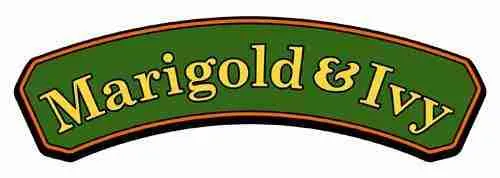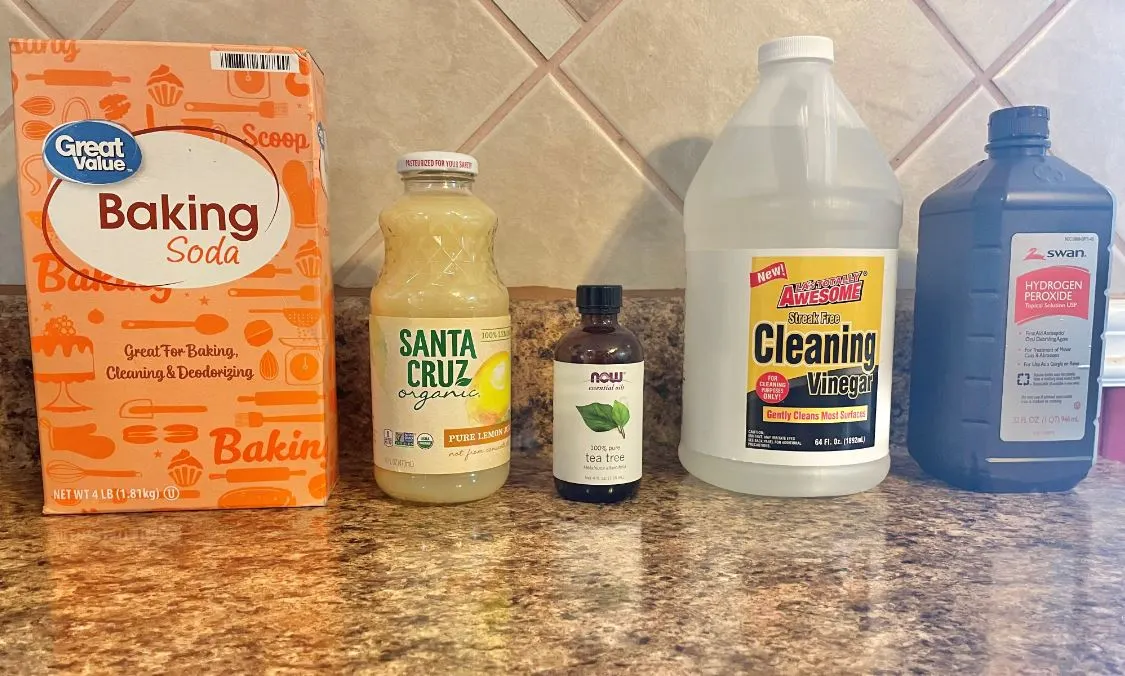For a long time, I had only heard that you should use bleach to remove mold from areas in your house. But when I got my own house a few years back, I started only using green and natural products, and so I wondered – Can you remove mold from your house naturally?
Yes, you can remove mold from your house naturally. There is a variety of natural household products that you can use to remove mold in your home. If you’re into essential oils, they can also remove mold.
Removing mold from your house naturally avoids using harsh chemicals that you can breathe in, come in contact with your skin, or expose to your pets or family.
Before exploring these natural products and ways of removing mold from your house, let’s briefly discuss what mold is, how it grows, and the different types of mold found in your home.
What Is Mold?
Mold is a fungus that reproduces through very small spores. The spores will tend to grow into mold in areas that contain a lot of moisture.
Mold needs moisture, the right temperature, and a source to feed on.
The most common indoor house molds are below:
Cladosporium – Usually grows in humid and damp areas in your home. Can appear as brown, yellow, olive green, or black.
Penicillium – Grows in damp areas or where leaks are in your home. Also, very common to find on food like fruits, vegetables, bread, and cheese. Mostly blue or green but also white or yellow.
Aspergillus – Found in humid and damp areas in your home. Also found in dead leaves and compost piles that are up against your home’s foundation. Aspergillus is usually black.
Stachybotrys Chartarum – This mold is commonly referred to as black mold. It is often seen in homes after flooding has occurred. Usually dark greenish-black or black.
How Do You Know You Have Mold in Your House?
Detecting mold in your home will not be hard to do now that you know what it looks like. Another indicator of mold is that it will usually have a musty smell.
Always check areas in your home that have flooded, where water has leaked, or where moisture accumulates.
This could be in the bathroom, basement, laundry area, crawlspace, attic, closets, windows, or under the kitchen sink.
Now that you know the most common types of mold found in your house and where to look for it, let’s discuss mold in your home, and if you can remove it naturally, and what to use to naturally remove it.
Can You Remove Mold Yourself?
As mentioned earlier, yes, you can remove visible mold yourself. But beware that although the mold is not alive and growing anymore, the mold particles will most likely still be in the air.
If you are someone who has any of the health factors that cause you to get sick from mold, you may want to avoid removing mold yourself.
But if you get sick from mold and still want to remove it from your house, you will need to wear the appropriate personal protective equipment.
Can You Kill Mold?
You can kill mold and can use natural household products to do it. But, like removing it, the mold particles will more than likely still be in the air.
And if you have any health factors mentioned earlier the mold particles in the air can still cause you to get sick.
Can You Remove Mold on Walls?
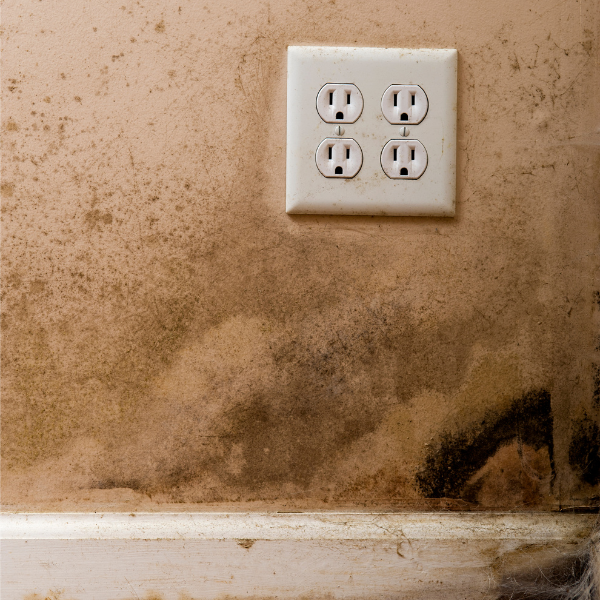
Mold shows up in the rooms of your house that have excess moisture.
If you have ever had flooding or a leak in your home (especially in the basement), you may find mold on your walls. And yes, you can remove mold from the walls of your house, and you can do it naturally.
There are a variety of natural ways to remove mold from the walls depending on the damage and amount of mold on your walls. We will touch on them soon but right now let’s cover the most common types of mold you can remove mold from.
Can You Remove Mold from Drywall?
Drywall is a porous material, and mold can grow on both sides of it. You can remove mold from drywall, but you need to monitor it regularly because it may grow back, especially if the spores are not killed and removed.
Can You Remove Mold from Plaster Walls?
Plaster walls are not porous, but mold can still grow on the paint or dust on it. You can remove mold from plaster walls more easily than drywall, but to prevent it from growing back, you will still need to eliminate the excessive moisture in that area.
Can You Remove Mold from Your Shower Walls?
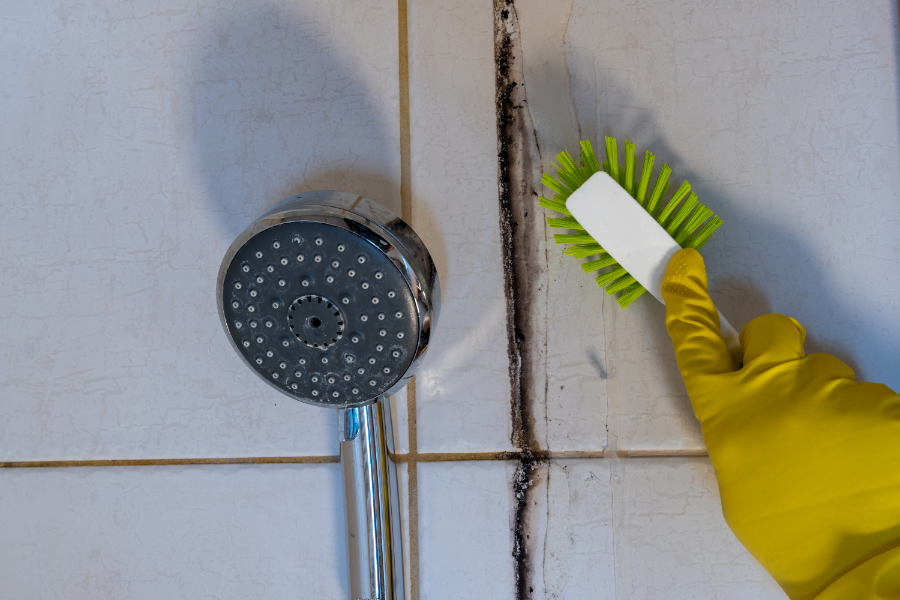
The bathroom is a common room for mold to grow in. Multiple daily uses of the shower without proper ventilation may cause mildew and mold to form on the shower walls and glass door or shower curtain.
You can remove the mold and mildew from your shower and shower walls. Consistently cleaning and removing mold will help prevent it from growing and spreading.
Proper ventilation is key to preventing mold and mildew in the bathroom and shower.
Although you can remove mold on the walls of your house and do it naturally, depending on the severity of the mold damage on the walls in your house, you may want to consult a professional.
Now, let’s discuss the natural household products and essential oils that can remove mold.
How Do You Get Rid of Mold in a House Naturally?
Now that we have established that you can kill and remove mold from your home, let’s discuss the natural household products and essential oils that can help you do it and how to do it.
Does Vinegar Kill Mold?
Outside of bleach, vinegar is probably the most common go-to household product for cleaning mold.
Vinegar does kill mold (killing 82% of known mold species), and it’s all-natural. It’s also acidic and contains antifungal and antibacterial properties.
Vinegar is also great for removing mold on the glass shower door. And you can wash your fruit in it to remove or prevent mold from growing on it
How to remove mold using vinegar:
- Spray white vinegar onto the area that contains the mold.
- Let it sit for 1 – 2 hours.
- Wipe up the mold with a damp rag or microfiber cloth.
Can You Remove Mold Using Baking Soda?
Baking soda is extremely useful for cleaning and removing odors from your house. And yes it can also remove mold from your house naturally as well as moisture.
How to remove mold using baking soda:
- Make a baking soda paste with two parts baking soda and one part water (amounts will vary depending on the amount of mold you are trying to remove).
- Stir the paste thoroughly then apply it to the area that contains the mold.
- Let it dry.
- Remove it using a damp sponge, rag, or microfiber cloth. If necessary, spray vinegar onto the paste to help break up and remove the mold.
Does Lemon Kill Mold?
Yes, lemon does kill mold. Lemon, like vinegar, is acidic and also contains antifungal and antibacterial properties.
But unlike vinegar, it leaves a clean and pleasant smell after you have used it.
How to remove mold using lemon:
- Cover the molded area with pure lemon juice (either by squeezing, juicing, or using premade lemon juice).
- Let it sit for 5 – 10 minutes.
- Wipe it up or scrub it with a damp cloth or sponge.
- For hard-to-remove mold stains repeat steps 1 – 3.
Can You Use Hydrogen Peroxide to Clean Mold?
Everyone probably has a bottle of hydrogen peroxide laying around their house (most likely in the medicine cabinet) and has used it for disinfecting a cut or scrape on their skin.
It is great, not only for disinfecting but for cleaning around your house including mold.
Research shows that hydrogen peroxide can hinder mold growth on solid surfaces that are not porous.
How to clean mold using hydrogen peroxide on non-porous surfaces:
- Put 3% hydrogen peroxide into a spray bottle and spray the moldy surface until saturated.
- Let the hydrogen peroxide sit for 10 minutes.
- Gently use a microfiber cloth or sponge to remove it and the mold. Apply more pressure if needed for tougher mold stains.
- Repeat if necessary.
Like bleach, hydrogen peroxide can whiten or bleach certain materials, also. Spot-test the surface first before covering the whole area of mold.
Are There Any Essential Oils That Clean Mold?
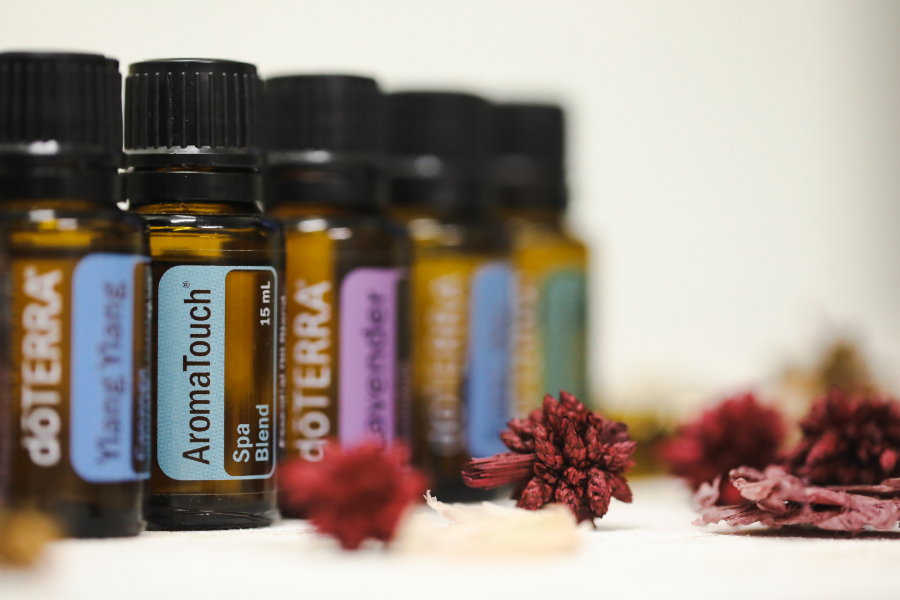
There are a wide array of essential oils on the market. But there is a handful used to combat mold. Here are some below:
- Tea Tree
- Juniper
- Cinnamon
- Thyme
- Patchouli
How to clean mold using tea tree oil:
- Using gloves, mix one teaspoon of tea tree oil with one cup of water in a spray bottle.
- Shake then spray the molded area with the mixture.
- Let it sit for 1 – 2 hours.
- Wipe up with a dry microfiber cloth or sponge.
Natural Mold Cleaner Recipe
There are different natural mold cleaner recipes available that contain essential oils and/or household products.
The one below I used to effectively remove mold in my house. It contains white vinegar and essential oils.
- 1 ¼ cups of white vinegar
- ¾ cup of water
- 4 drops cinnamon essential oil
- 6 drops patchouli essential oil
- 2 teaspoons tea tree essential oil
Directions:
- Combine all the ingredients in a plastic spray bottle.
- Spray the molded area and let sit for a couple of hours.
- Wipe off with a microfiber cloth or rag.
- Spray the area again and let dry.
This recipe is from The Naturally Clean Home by Karyn Siegel-Maier p. 58
Can Mold Be Completely Removed from a House?
You can do the best you can to completely remove mold yourself or hire a mold remediation expert who will professionally clear out the mold in addition to the mold spores in your home.
But if the conditions are right, mold is always going to grow.
How to Prevent Mold in Your House
As mentioned earlier mold needs moisture, the right temperature, and a source to feed on to grow in your house.
So to prevent it from growing, try to minimize these factors.
Moisture/ Humidity
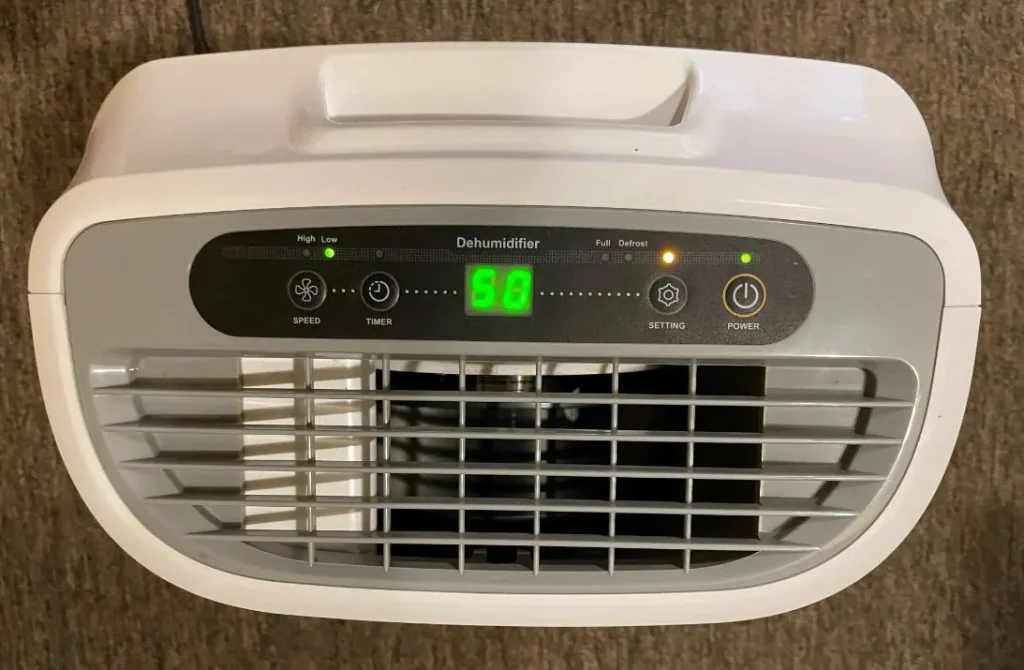
To prevent mold from growing in your house, remove excess moisture and lower the humidity.
As mentioned earlier, areas like the bathroom, basement, laundry area, crawlspace, attic, closets, windows, or under the kitchen sink tend to accumulate excess moisture.
The most common and probably the easiest way to remove excess moisture is by using exhaust fans and dehumidifiers in these areas.
Exhaust fans can be especially useful in the bathroom and kitchen. It is recommended to lower the humidity level in your home to 50%, and you can do that by setting your dehumidifier to that level.
Temperature
The ideal temperature for mold is between 60° F and 80° F degrees. Mold will not grow below 40° F. Try to keep your house’s temperature on the lower end of this range.
Dust and Dirt
Dust and dirt are food sources for mold. So clean, dust, and vacuum the dirt and dust in your house or hire a house cleaner.
Regularly changing your HVAC filters and furnace or air conditioning filters can also help prevent dust, dirt, and mold from entering your home’s air.
Conclusion
As you can see, you can remove mold from your house naturally by yourself using household products and essential oils.
The most common household products and essential oils for removing mold in your house are vinegar, baking soda, lemon, and hydrogen peroxide.
The most common essential oils to use are Tea Tree, Juniper, Cinnamon, Thyme, and Patchouli.
The EPA (Environmental Protection Agency) recommends that if the area you are removing mold from is larger than 10 square feet, refer to this EPA guide for Mold Remediation in Schools and Commercial Buildings.
The EPA also recommends that if it’s larger than 10 square feet and you want to hire a contractor to remove the mold in your home make sure they have experience cleaning up mold.
To find out more about the mold in your house and the sicknesses it can cause, check out our post – Can You Get Sick from Mold in Your House?
Sources:
EPA Mold Course Chapter 6: Containment and Personal Protective Equipment (PPE)
Combating Black Mold – MSU-ES Dawg Tracks
Chemical Disinfectants – Centers for Disease Control and Prevention
Siefel-Maier, Karyn. The Naturally Clean Home Second edition. Storey Publishing, 2008
Mold – Where It Can Grow – NC Department of Health and Human Services
